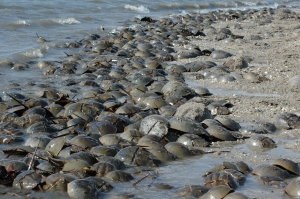I am a bivalve that grows in the Atlantic Ocean. I do have several species closely related to me that live in freshwater. I am very closely related to clams and oysters. I tend to grow to about 4 inches long. I live in colonies and attach to bulkheads, rope and rocks very easily. To do this I use a sticky protein, called byssus, that forms tough yellow fibers that harden in salt water. My inside is often pearly iridescent and my outside is a blueish black color. I use my gills to filter water to get food and oxygen which I need to survive. I am very tasty steamed with garlic and butter.
Here are some pictures of me:
Images (c) top: maggiesfarm.anotherdotcom.com, middle and bottom: Beach Chair Scientist.
















What people are saying …